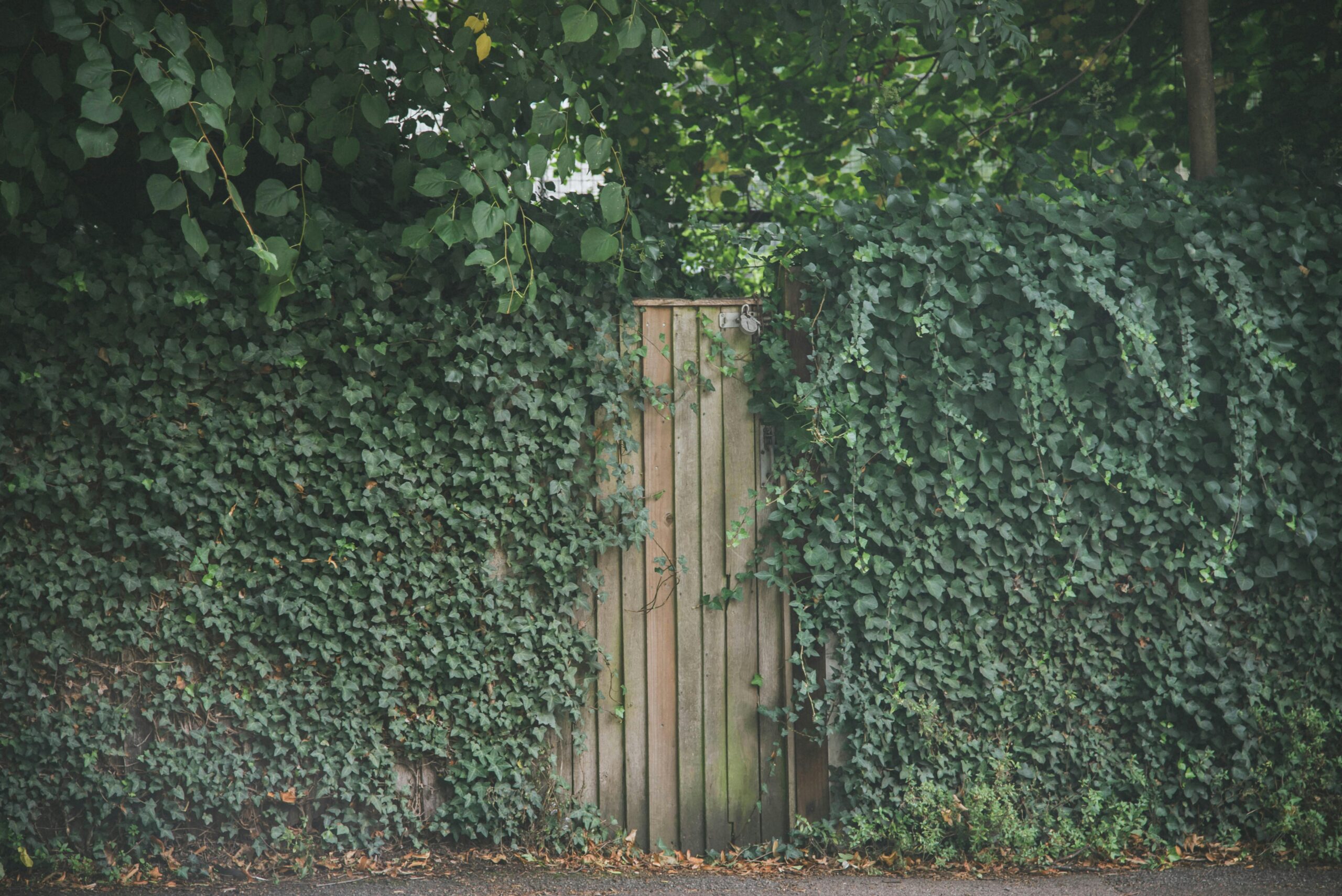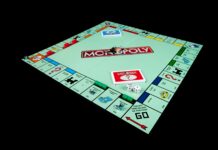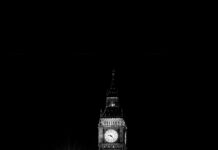When it comes to understanding the zip code for London, England, many people often feel confused. Did you know that London doesn’t actually have a single zip code? Instead, it’s divided into multiple postcodes that reflect different areas of this vibrant city. Curious about how these postcode sectors can help you navigate the bustling streets of London? Each zone, from the iconic W1 postcode in the West End to the historic E1 postcode in the East, has its own unique charm and characteristics. Are you looking to move or visit? Knowing the right London postcode can make all the difference. In this blog, we’ll delve into the intricacies of London’s postal system, exploring how it works and why it’s essential for both residents and tourists alike. With millions of people calling this metropolis home, understanding the zip code London system not only helps you find your way but also unravels the rich tapestry of history and culture that each area embodies. So, what are you waiting for? Let’s unlock the secrets behind London’s postcode districts and discover what makes each one so special!
Unveiling the Secrets: How London Zip Codes Can Lead You to Hidden Gems in the City
London, the bustling capital of England, is not just a city; its a whole world in itself, right? And when it comes to navigating this metropolis, understanding the zip code for London England UK is kinda crucial. I mean, who wants to get lost in a maze of streets? Not me, that’s for sure! So let’s dive into the nitty-gritty of London’s postal codes, shall we?
First off, it’s important to mention that the term “zip code” is actually an American thing, while the Brits prefer “postcode.” But for the sake of clarity and because we’re all trying to get on the same page here, we’ll stick with “zip code” for this piece. So, London has a unique system of postcodes, each one representing different areas, which honestly can be a bit confusing.
You got your basic format, which is usually a combination of letters and numbers. For example, E1 is for the East End while W1 is for the West End. Each postcode is like a little identifier that tells you where you are, and you know, if you’re in the right part of town or not.
Here’s a breakdown of the postcode areas in London:
| Area | Postcode Example | Description |
|---|---|---|
| East London | E1, E2, E3 | Known for its diverse communities and vibrant culture. |
| North London | N1, N2, N3 | A bit posher, with leafy suburbs and parks. |
| South London | SE1, SE2, SE3 | Full of history and charm; great pubs too! |
| West London | W1, W2, W3 | Home to Kensington and Chelsea, fancy stuff. |
Not really sure why this matters, but understanding where you are in London can mean the difference between a fun day out and, well, getting hopelessly lost. You ever tried finding a restaurant in Soho without a postcode? It’s like looking for a needle in a haystack!
So let’s talk about how to actually find your postcode. It’s not rocket science, but it’s also not exactly straightforward. You can pop onto the Royal Mail website, or use Google Maps, which is what most folks do nowadays. You just type in the address and voilà, you got your zip code for London England UK right there. And if you’re anything like me, you probably rely on your phone for directions too much.
Now, if you’re planning to move to London or just visiting, knowing these postal codes is key. They come in handy when you’re ordering stuff online or trying to figure out where to send your letters. Like, can you imagine sending a postcard to your gran without the right postcode? She’d be waiting forever, bless her!
And here’s where it gets a bit quirky—some postcodes are well-known for specific things. For instance, SW1A is famous because it’s where Buckingham Palace is. So if you’re trying to impress someone with your London knowledge, just throw that out there! “Oh, you know SW1A? That’s where the Queen lives…” I mean, who wouldn’t be impressed, right?
Oh, and let’s not forget about the postcode lottery. No, not the one where you win money, but the one where your postcode can affect your insurance premiums or even how fast your internet is. Maybe it’s just me, but I find that a bit unfair. Like, come on, can’t we all have decent internet speeds?
Here’s a practical insight for you: if you’re ever moving around in London, get yourself an app that can help with postcodes. There are tons of them out there that can help you navigate. Just type in a postcode, and you can see all the nearby places, which is super useful when you’re trying to find a café or a pub. And let’s be honest, who doesn’t need coffee or a pint after a long day?
Now, let’s discuss some of the quirks of London postcodes. Each area has its own vibe and, believe it or not, some people actually take pride in their postcode! Like, if you’re from N1, you’re practically royalty in certain circles. And then there’s the rivalry between postcodes, which can be a whole thing. “Oh, you’re from SE? Well, I’m from NW—we’re basically rivals.”
In summary, getting to grips with the zip code for London England UK is not just about knowing where you are; it’s about understanding the city’s pulse. It’s about fitting in, making connections, and maybe even finding that hidden gem of a coffee shop tucked away in a side street.
So, whether you’re a local or just visiting, remember these postcode tips. They
Top 10 Underrated Areas in London You Can Explore Using Your Zip Code
London, the bustling capital of England, is famous for many things, like its rich history, iconic landmarks, and of course, its diverse neighbourhoods. But there’s this one little detail that often flies under the radar, yet it’s so important — the zip code for London England UK. Not really sure why this matters, but I guess it does, right? So, let’s dive into the nitty-gritty of London’s postal codes, shall we?
First off, let’s get one thing clear — in the UK, we don’t actually use the term “zip code” like they do across the pond in the US. Instead, we prefer the term “postcode.” Weird, I know. But, whatever floats your boat. London’s postcodes are a bit quirky and can be confusing if you’re not familiar with them. They consists of two parts: the area code and the district code. For instance, the postcode “SW1A 1AA” breaks down into “SW” for South West London and “1A 1AA” for the specific location. Simple, right?
Here’s a table for a better understanding of London’s postal area codes:
| Area Code | Description |
|---|---|
| E | East London |
| N | North London |
| SE | South East London |
| SW | South West London |
| W | West London |
| NW | North West London |
| EC | East Central London |
| WC | West Central London |
Now, maybe it’s just me, but I feel like these codes can be a bit more helpful than just knowing what part of London you’re in. Like, if you’re looking to send a letter or parcel, you really don’t want to mess up, right? I mean, who wants their birthday present to end up in the wrong hands? That would be a disaster!
To give you an idea of how many postcodes exist in London, there’s over 100 different postcode districts. Yup, you heard that right. Each area has its own unique codes, which can make finding a specific place a tad tricky. For example, the postcode for Buckingham Palace is SW1A 1AA, while the postcode for the Tower of London is EC3N 4AB. Talk about diverse!
Here’s a quick list of some well-known locations and their zip code for London England UK:
- Buckingham Palace: SW1A 1AA
- The British Museum: WC1B 3DG
- The Shard: SE1 9SG
- The London Eye: SE1 7PB
- Westminster Abbey: SW1P 3PA
And just to keep things interesting, let’s throw in some fun facts. Did you know that London has the oldest working post office in the world? Yup, it’s called the “General Post Office,” and it opened way back in 1660. Now that’s some serious postal history there!
Now, if you’re new to London or planning to move here, understanding the zip code for London England UK is essential. It helps with everything from setting up your bank account to registering with your local doctor. Seriously, if you don’t have a postcode, good luck getting anything sorted. I mean, it’s like trying to bake a cake without knowing the recipe — it just ain’t gonna happen!
Here’s a practical insight — if you’re ever looking for a specific postcode, just hop onto Google and type in “postcode finder.” It’ll bring up a whole load of websites that let you search by address or area. Easy peasy, right? Just make sure to double-check, cause I can’t tell you how many times I’ve typed in the wrong postcode myself. Not proud of it, but hey, I’m human after all.
Also, it’s worth mentioning that London’s postcodes can be used to determine things like property prices, school catchment areas, and even crime rates. So, if you’re trying to decide where to live, keep an eye on those postcodes! Some areas are more desirable than others, and knowing the postcode can give you a pretty good idea of what to expect in terms of amenities and lifestyles.
So, next time someone brings up the zip code for London England UK, you can nod your head knowingly and maybe even share a fun fact or two. Because who doesn’t love being that person in the room with all the random knowledge? It’s like having a superpower, and honestly, we could all use a little more of that in our lives. Happy postcode hunting!
The Ultimate Guide to London Zip Codes: Where to Find the City’s Best-Kept Secrets
Alright, let’s dive into the world of zip codes for London, England, UK. So, you might be wonderin’ why we even need to know about these zip codes, right? I mean, it’s not like they’re the secret to life or anything, but hey, they are kinda important if you’re trying to send a letter or locate a place. Not really sure why this matters, but here we are.
To kick things off, let’s clarify something. In the UK, we don’t really call ‘em zip codes; we actually refer to ‘em as postcodes. Yeah, that’s right! It’s one of those quirky British things. The postcode system in London is a bit like a jigsaw puzzle, with various parts fitting together to create a unique identifier for each area. But, if you’re trying to find your way around, you’ll want to know the zip code for London England UK.
Now, London has loads of postcodes, each representin’ a different area. For example, you got your central London areas like WC1, which is for Bloomsbury and Kings Cross, and then you have the iconic W1, which covers areas like Soho and Mayfair. Seriously, it’s like a postcode buffet out there. But maybe it’s just me, but I feel like the whole system could use a bit of simplification.
To make it easier, here’s a little table detailing some of the most popular postcodes in London:
| Postcode | Area |
|---|---|
| EC1 | Farringdon |
| WC1 | Bloomsbury |
| W1 | Mayfair |
| SW1 | Westminster |
| E1 | Whitechapel |
| N1 | Islington |
If you’re looking to send a letter, you’ll need to know the full postcode, which usually consist of two parts. The first part indicates the postal district, while the second part pinpoints the exact address. For instance, if you’re sending somethin’ to a swanky place in Mayfair, you might be usin’ W1K 7AA. It’s like a little treasure map!
And speaking of treasure maps, let’s talk about why you might need the zip code for London England UK in the first place. If you’re ordering a pizza (because who doesn’t love pizza?), you’ll need to give the delivery driver your postcode. Otherwise, they might end up at the wrong place, and that’s just tragic. Seriously, how awful would it be to miss out on your cheesy goodness just because you forgot to mention your postcode?
Now, on to a different angle. The postcode system in London is also used for things like taxes, business rates, and even determining your council services. So, you see, it’s not just about mail. It’s like a whole system that keeps the city running. But honestly, sometimes I wonder if it’s all too complicated for its own good.
Here’s a little insight for ya: Areas with the same postcode often share similar characteristics, whether that’s the type of houses, the vibe, or even the demographics. For example, areas with the zip code for London England UK like SW1 are usually more affluent, while places like E1 might have a more diverse community. It’s interesting how much a simple code can say about a place, right?
But let’s get back to the practical side of things. If you’re moving to London or just planning a visit, knowing your postcode can save you a lot of hassle. Here’s a quick list of tips:
- Always include your postcode when ordering stuff online. It’s like the golden ticket to having your items delivered correctly.
- Use a postcode finder tool if you’re unsure. There are loads of websites out there that can help you figure out where you’re supposed to be.
- When in doubt, ask locals! They usually know the ins and outs better than some random website.
And if you’re really keen on understanding the whole postcode thing, you could even look into the history of the London postcode system. It’s a bit nerdy, but maybe it’ll give you some good trivia for your next pub quiz night.
So, in summary, the zip code for London England UK is more than just a bunch of letters and numbers. It’s a way of navigating this massive city, ensuring your mail gets to the right place, and even understanding the different communities that make London what it is. I mean, who would’ve thought something so small could have such a big impact, eh?
Exploring London by Zip Code: Discover the Most Enchanting Neighbourhoods
Right, so let’s dive into this whole zip code thing for London, England, UK. You might be wondering, what’s the big deal about a zip code? Well, not really sure why this matters, but if you’re living or planning to live in London, you might wanna know where you’re sending your letters or packages, right? So, let’s break it down.
First off, London ain’t like your average city. It’s got all these different areas, and each one has its own unique vibe. You could say the zip codes here are a bit like a badge of honour, showing off which part of London you’re from. The postal system in London is known as the postcode system, and it’s a bit more complicated than just a simple five-digit number, you know?
The pattern for London’s postal codes is pretty much like this: it starts with one or two letters, which represent the postal district. For example, E1 is for East London, while W1 is for West London. Then there’s a number, and then a space followed by another letter and number combination. So, it’s like E1 6AN or W1A 1AA. It can get a bit confusing, especially if you’re not used to it.
Here’s a little table that might help to clarify things a bit:
| Area | Postal Code | Description |
|---|---|---|
| East London | E1 | Including areas like Whitechapel |
| West London | W1 | Covers areas like Mayfair |
| North London | N1 | Includes Islington |
| South London | SE1 | Covers areas like Southwark |
| Central London | WC1 | Includes Holborn and surrounding areas |
Now, maybe it’s just me, but I feel like the whole postcode thing can be a bit of a maze. Like, why’s it gotta be so complicated? If you’re looking for an area in London, you’ll often hear people dropping their postcode like it’s some kind of secret code. You’ll hear someone say, “Oh, I live in W1A,” and you’re left there thinking, “That’s nice, but what does that even mean?”
And here’s another thing to consider: it’s not just about getting your mail delivered. If you’re looking for a flat or a house, the postcode can really make a difference in price. You could be looking at two similar properties, one in a posh postcode and the other not so much. Guess which one’s gonna be more expensive? Yep, you got it.
Let’s take a look at how these zip codes for London England UK impact house prices. Here’s a quick listing of some postcodes and their average property prices:
- SW1A (Westminster): Average price is around £1.2 million.
- N1 (Islington): Average price is about £850,000.
- E1 (Whitechapel): Average price is nearly £600,000.
- SE1 (Southwark): Average price sits around £700,000.
- W1 (Mayfair): Average price? A whopping £2 million!
Crazy, right? If you’re not careful, you could end up paying through the nose just for a few extra letters in your postcode. And don’t even get me started on the congestion charge zones and all that — it’s enough to make your head spin.
Now, when you’re trying to find a specific postcode, it’s not like you can just whip out your phone and type in “London zip code.” You’ll need to know the area you’re interested in. There’s a whole bunch of websites that can help you with this — you just gotta know where to look.
Here’s a fun fact: did you know that London has over 100 postcode districts? Yup, that’s a whole lotta letters and numbers. Each area has its own character and appeal, which is why people are sometimes fiercely loyal to their postcodes. You’re not just living in the city; you’re representing your postcode, mate!
In case you’re trying to figure out where to move or visit, here’s a quick list of popular areas and their corresponding postcodes:
- Camden Town – NW1
- Chelsea – SW3
- Greenwich – SE10
- Notting Hill – W11
- Shoreditch – E2
So, if you’re planning a trip or moving, keep an eye on those zip codes for London England UK. They can make or break your experience in this sprawling metropolis.
And there you have it! A bit of
Why Understanding London’s Zip Codes Can Unlock a World of Hidden Treasures
When we talk about the zip code for London England UK, it’s kinda like opening a can of worms, isn’t it? Like, why do we even need zip codes? They’re just numbers and letters jumble together, but apparently, they help the postman deliver our letters, or so they say. Anyway, London is a massive city, and each area has its own postal code, which is super helpful for finding your way around. But, honestly, it can be a bit confusing at first.
The postal codes in London are known as “postcodes,” and they’re not quite the same as zip codes in the US. So, here’s the deal: a typical London postcode has a format like “W1A 1AA” or “SW1A 2AA.” The first part, called the outward code, indicates the area, while the second part, the inward code, helps pinpoint a specific location. Confusing, right? Maybe it’s just me, but I feel like they could’ve made it easier.
Here’s a quick table to give you an idea of some postcodes in London:
| Area | Postcode |
|---|---|
| Central London | WC1A 1AA |
| Kensington | SW7 2AZ |
| Camden | NW1 8BS |
| Westminster | SW1A 2AA |
| Greenwich | SE10 8XG |
So, when looking for the zip code for London England UK, you gotta remember that it’s all about those little letters and numbers that pinpoint your location. And don’t get too hung up on the specifics, cause even locals sometimes mess it up. I mean, who hasn’t accidentally sent a letter to the wrong postcode? Like, oops!
Now, you might be wondering, “How do I actually find my postcode?” Well, there’s a nifty little tool called the Royal Mail postcode finder, which is, surprise, surprise, kinda useful. Just hop on their website, type in your address, and voila! There it is, your very own postcode. But, be warned, it’s not always 100% accurate. I’ve tried it, and sometimes it just gives me this random postcode, and I’m like, “Really? Is this where I live?”
Another thing to consider when dealing with the zip code for London England UK, is how they can affect your life. For example, certain postcodes can be a bit more desirable than others. You know, the ones where all the cool kids hang out? If you’re looking to buy a flat, those posh postcodes might come with a hefty price tag. So, if you’re thinking about moving to London, pick your postcode wisely.
If you’re a tourist, you might not care much about the nitty-gritty of postcodes, but they can still come in handy. For instance, if you’re trying to get to a specific attraction, knowing the postcode can help you navigate the public transport system. And trust me, the London Underground isn’t the easiest maze to figure out.
I’ve got a list of popular tourist attractions and their postcodes for you. So, if you’re planning a visit, this could come in handy:
| Attraction | Postcode |
|---|---|
| The British Museum | WC1B 3DG |
| Buckingham Palace | SW1A 1AA |
| The Tower of London | EC3N 4AB |
| The London Eye | SE1 7PB |
| Trafalgar Square | WC2N 5DN |
And speaking of public transport, don’t forget that certain postcodes can make a difference in your travel options. Some areas are better connected than others, so if you’re looking to be in the heart of the action, you might wanna look for postcodes that are close to major tube stations. But, then again, maybe you enjoy the adventure of getting lost? Not really sure why this matters, but it’s something to think about.
Now, if you’re someone who doesn’t like change, the postcode system in London can be a bit overwhelming. You have W, SW, N, and E – it’s like a secret code that you need to crack. And don’t even get me started on the fact that some areas have similar codes. Like, how do you tell the difference between “NW1” and “N1”? Good luck, mate!
In the end, understanding the zip code for London England UK is just a small piece of the puzzle that is this sprawling metropolis. It’s a bit like learning to ride a bike — it may seem complicated at first, but once you get the hang of it, you’ll be zooming around
Conclusion
In conclusion, understanding the zip code system in London is essential for efficient navigation, whether you’re a resident, a visitor, or a business operating in the city. We explored how London’s postal codes, often referred to as postcodes, are structured, with the initial letters denoting specific areas and the subsequent digits providing precise locations. This intricate system not only facilitates mail delivery but also plays a vital role in online shopping, navigation apps, and even property searches. As London’s postal code landscape continues to evolve, familiarising yourself with this vital aspect can enhance your experience in the city. We encourage you to take a moment to look up your postcode or that of a location you plan to visit, as it can significantly improve your understanding and navigation of this bustling metropolis. Embrace the convenience that comes with knowing your way around London through its postcode system!













